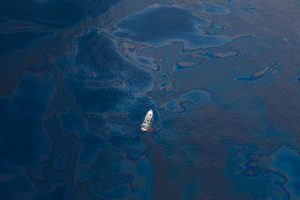Challenges and Triumphs: Electrifying the Future of Tugboat Design
During PEP’s March Member Breakfast, our speakers discussed the current
[et_pb_section bb_built=”1″ fullwidth=”off” specialty=”on”][et_pb_column type=”2_3″ specialty_columns=”2″][et_pb_row_inner admin_label=”Row”][et_pb_column_inner type=”4_4″ saved_specialty_column_type=”2_3″][et_pb_text background_layout=”light” text_orientation=”left” use_border_color=”off” border_color=”#ffffff” border_style=”solid” module_alignment=”left”]
 Statement on the AGCRC’s Project Evaluation and Selection Process for the Multi-year Implementation Plan
Statement on the AGCRC’s Project Evaluation and Selection Process for the Multi-year Implementation PlanThe Board of Directors and members of Partners for Environmental Progress (PEP) appreciate the time and effort that the members of the Alabama Gulf Coast Recovery Council (AGCRC) and the staff of the Alabama Department of Conservation and Natural Resources (ADCNR) have invested in developing the Project Evaluation and Selection Process for the Multiyear Implementation Plan (MIP) development for Bucket 1 of the RESTORE Act. In particular, PEP applauds the addition of the Requests for Evaluation (RFE) phase requiring expert review of the complex issues that are involved in evaluating the priority, feasibility, environmental impacts and scientific basis of each individual project. It is imperative that all projects ultimately selected for the MIP use the best available science, the best environmental and management practices and do not have any adverse environmental impact. All projects should be consistent with the Mobile Bay National Estuary Program’s Comprehensive Conservation & Management Plan and the numerous individual comprehensive watershed management plans being developed around the area – all of which have included a significant level of community outreach and input.
Any project advancing through the RFE process to the MIP, particularly any economic/infrastructure project, must employ best environmental and management practices, including energy efficiency, low impact development methods, green building practices, and nature based approaches. No money should be allocated to any project that will have an avoidable adverse environmental impact. The RFE analysis conducted by experts should focus on science-based research and engineering. The RFE process can and should evaluate these factors.
The Deep Water Horizon disaster damaged the triple bottom line of Alabama’s Gulf Coast: the economy, the environment and our people. Therefore, the funds from the Deep Water Horizon disaster should be spent on projects that address all three. While the AGCRC has stated that the focus areas for the first MIP will be Economic and Infrastructure projects and related Planning Assistance, the AGCRC must allow those projects selected for the first MIP with the highest priority and most beneficial impacts economically and environmentally to be selected.
There are far more worthy projects than funds. We appreciate the difficulty for each member of the AGCRC and the complexity of the competing priorities. In summary, PEP members ask the AGCRC to select economic/infrastructure/planning projects that also provide significant and beneficial environmental impacts. We believe projects that will improve the Alabama Gulf Coast’s triple bottom line are the best choices for RESTORE funds from Bucket 1.
PEP is a coalition of business leaders who support applying science-based best environmental practices to business and community issues. PEP’s 220+ company members who employ more than 22,000 local individuals represent the diversity of business and industry along the Gulf Coast and include major manufacturing, shipbuilding, engineering, contractors, industrial service providers and more.
[/et_pb_text][/et_pb_column_inner][/et_pb_row_inner][/et_pb_column][et_pb_column type=”1_3″][et_pb_sidebar orientation=”right” area=”sidebar-1″ background_layout=”light” remove_border=”off” show_border=”off” /][/et_pb_column][/et_pb_section]
During PEP’s March Member Breakfast, our speakers discussed the current
Another PEP member is in the news for their work
Electric aviation is becoming a reality in Alabama as the
The PEP March newsletter is out! Spring in Mobile is
Partners for Environmental Progress (PEP) is proud to announce the
Ransom Recycling of Chickasaw has announced it will soon be the